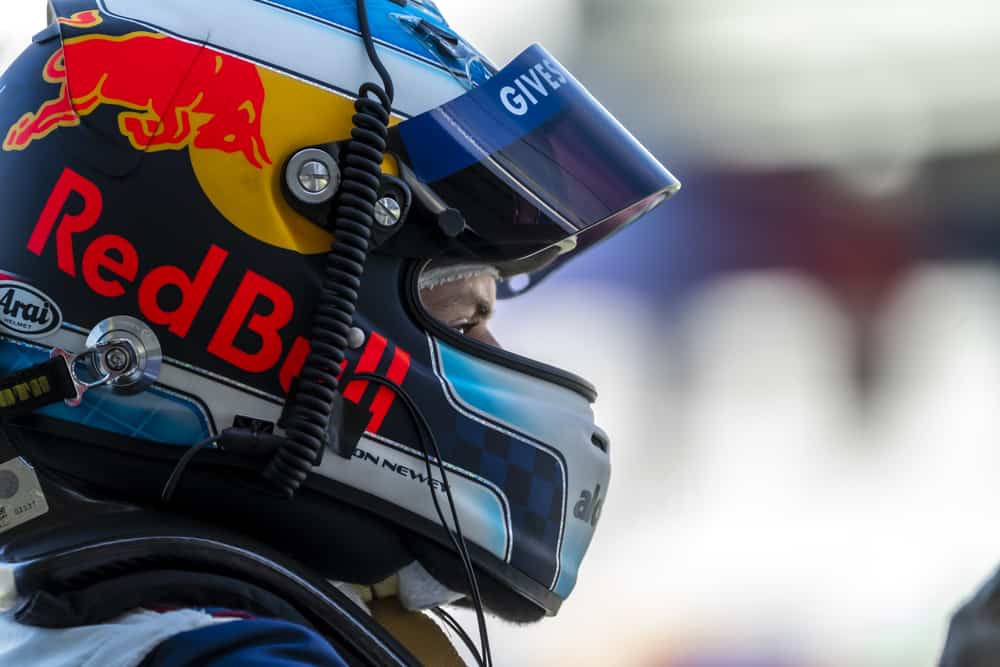The thought of NASCAR drivers being able to hurl racing taunts over the open air or coordinate with teammates, shake and bake, lends itself to some creative racing scenarios. Radio communications from drivers to crew chiefs and drivers to spotters are available for fans to listen in on and give valuable information about other race cars’ track positions as well as lap times and other track conditions.
With a two-way radio and advanced intercom systems, it’s easy to see driver communication is a crucial part of race strategy for race teams.
Radio was first used in 1950 due to a surplus of post-war communications gear. A few teams saw the potential radios had to make racing safer, but NASCAR quickly banned radios because not all teams could afford them. By the 1960s, team spotters were using radios to relay info from crew chiefs to drivers in race cars and to the pit crew much more efficiently.
By the 1990s, earpieces and advanced two-way technology were instituted organization-wide to stop crashes while reading the pit board. But could drivers ever talk directly to each other? Let’s find out.
Can NASCAR Drivers Communicate During a Race?
Drivers can communicate with pretty much everyone on their team who is plugged into the team chatter but mainly only contacts 2 to 3 people. The two-way radio is open for instructions from track spotters and crew chiefs and the driver typically only responds to them. Drivers cannot communicate outside of their designated channel and can not contact other drivers directly.
Since drivers are in constant radio contact with the two-way radio system, fans can use digital radio equipment and purchase scanners to listen in on their favorite racers as they talk from the cockpit. Other driver teams can also scan opponents’ radio conversations to be aware of potential track dangers or to adjust their strategies.
Drivers mainly talk to spotters to get track and race updates and the crew chief to get and give car reports and plan pitstops and overall race strategy
Haver NASCAR Racers Ever Been Able to Talk to Each Other?
Before 2012 racers on a team communicated with other drivers on their teams to work in tandem for bumping or side-drafting techniques. The two-car draft became a favorite driver maneuver but required constant communication between driver teams to line up perfectly.
Drivers liked using driver-to-driver communication to advise of track damages on courses where restrictor plates make car bunching more common. Drivers can have a tough time seeing obstructions on the track or identifying problem cars when they are bunched up on the superspeedway. Driver-to-driver communication helped teams coordinate and made for safer races.
Eventually, the 4 car teams began effectively communicating and creating race position advantages that lone car teams and unequipped motorists were unable to compete with. Most NASCAR rules, like the end of two-way communication between racers, occur when one team begins to develop an unfair advantage over the others, making the race winners predictable and less predictable.
There was also the possibility of driver distractions from too many overlapping voices from all the drivers and crew and team causing confusion. Keeping common communications between key people, like communication between crew chief, drivers, and spotters, reduced the voices on the air. This also makes it easier for fans to hear their favorite drivers lament their boredom via radio communications.
Communication System
A reliable communication loop is needed to keep communication with crew members constant. The actual communication device that the two-way communication is connected through is on the driver’s left, where their helmet can plug in the hands-free communication technology making it easier to maintain constant two-way communication and making long high-speed races even safer.
| Component | Location | Use |
| In-Car Radio | Left of the driver’s seat | Adjust channels and volume |
| Push to Talk Switch | Steering Wheel | Allows communication to broadcast |
| Headset | In crash helmet | Allows the driver to hear and be heard |
| Whip Antenna | On car roof | Broadcasts a clear signal |
| Receivers and Mics | Pit crew and team member locations | Let’s crew and team hear and be heard |
How Do NASCAR Drivers Communicate While Racing?
The digital communications in place for drivers to keep constant communication within teams are reliable and strong and give everyone involved a way to communicate instantly. While driver-to-driver communications are banned, officials can communicate to drivers in emergency situations in addition to using the standard flag system. Direct communication like this can help make racing safer, especially in poor weather conditions where lap flags may become harder to see.
Through the radio channel Racing Radios, driver communication is broadcast and can be listened to by fans at the track or listening to the correct satellite radio stations. The entire radio communication by the driver stays live and keeps race crews, fans, and other teams up to date on a driver’s actions.
Motorola builds the in-car radio unit and earpiece in the helmet, which adds a failproof method of communication superior to pit boards, flag systems, and knocking on different panels to signal vehicle issues. No more waving to other drivers to signal a race track error since pit crews are close to each other; they can communicate with other teams’ crews to get messages from driver to driver as well. This is the only way driver-to-driver communication is now possible in NASCAR.

